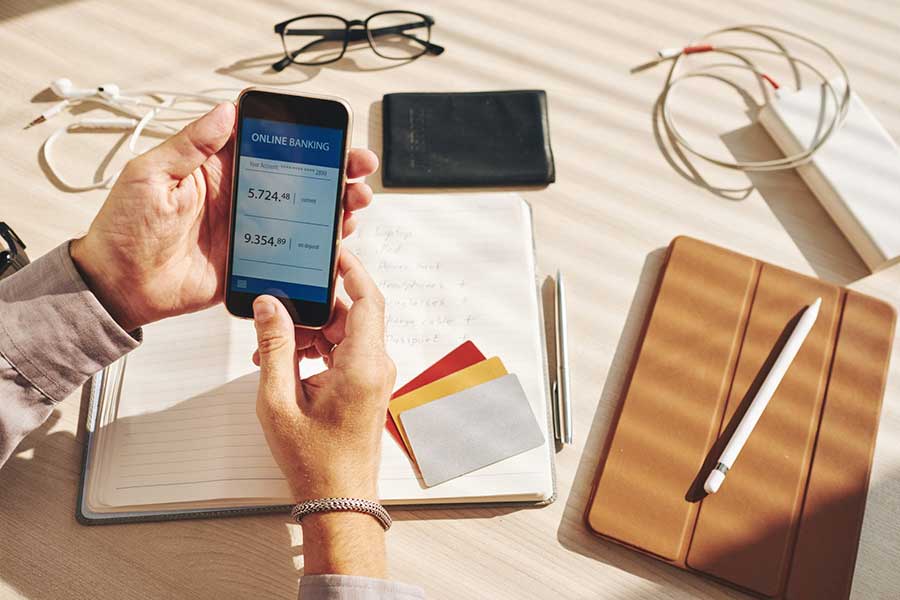It can be frustrating to discover that your checking or savings account has been closed, especially if you want to use it again. Many people wonder whether it’s possible to get that same account back.

The answer depends on your bank, how long ago the account was closed, and the reason behind the closure. In this article, we’ll cover when reopening might work, when it won’t, and what options you have if the bank says no.
How Banks Handle Closed Accounts
Every bank sets its own policies for closing and reopening accounts. In general, the reason for closure and the amount of time that has passed are the two biggest factors.
Some banks allow you to request reopening if the account was recently closed and no issues remain. Others treat closures as permanent once the account is removed from their system. The best way to know for sure is to contact your bank directly and ask about their specific policy.
Common Reasons Bank Accounts Are Closed
Banks close accounts for several different reasons. Knowing why yours was closed can help you figure out whether reopening is even possible.
- Inactivity: Accounts left unused for long periods may be closed automatically.
- Negative balance or overdrafts: Unpaid fees or repeated overdrafts often lead to closure.
- Fraud concerns or suspicious activity: Banks may shut down accounts to protect against potential losses.
- Customer request: Some people choose to close an account themselves, later deciding they want it back.
- Bank decision: Policy changes, mergers, or internal reviews sometimes result in account closures.
When Banks Allow Reopening vs. When They Don’t
Banks do not treat all closures the same way. Some accounts can be restored if you act quickly, while others are permanently shut down.
Situations Where Reopening May Be Possible
If your account falls into one of these categories, there’s a better chance the bank will let you reopen it:
- Recently closed for inactivity: Many banks will reopen accounts that were closed within the past 30 to 90 days.
- Closed by mistake or bank error: If the bank made an error, they may reverse the closure once the issue is confirmed.
- Closed at your request but reopened quickly: If you changed your mind shortly after closing, banks sometimes honor a reopening request.
Situations Where Reopening Is Unlikely
Some closures are final and cannot be undone. These cases usually require opening a brand-new account:
- Account closed for suspected fraud: Banks generally will not reopen accounts linked to fraud investigations.
- Ongoing negative balance or unpaid fees: You must resolve any unpaid balance before applying for a new account. Reopening is rarely allowed.
- Closure more than 6–12 months ago: Many banks purge closed accounts from their system after this timeframe, making reopening impossible.
What to Do if You Want to Reopen Your Account
If you believe your account is eligible for reopening, there are steps you can take to improve your chances.
Step 1: Contact Customer Service Immediately
Call your bank or visit a branch as soon as you realize the account has been closed. Acting quickly makes a difference.
Step 2: Ask About the Bank’s Reopening Policy
Each bank has different rules, so you’ll need to confirm whether your account is still eligible.
Step 3: Resolve Outstanding Issues
If you owe overdraft fees or left a negative balance, the bank may require full repayment before considering reopening.
Step 4: Provide Identification and Verification
Banks often ask for updated ID, proof of address, or other documents before granting access to a reopened account.
Reopening an Account vs. Opening a New One
If your bank does not allow reopening, you may need to apply for a new account. Here’s how the two options compare:
| Factor | Reopening Closed Account | Opening New Account |
|---|---|---|
| Timeframe | Often faster if within 30–90 days | Full new application required |
| Fees | May need to clear old fees | Standard opening deposit applies |
| Account Number | May keep old account number | New account number issued |
| Credit/Background Check | Sometimes waived | Usually required |
| Availability | Limited by bank policy | Almost always possible |
What to Do if Reopening Isn’t Possible
If your bank confirms that reopening is not an option, you still have other paths forward. The right choice depends on your financial situation and banking needs.
- Apply for a new checking or savings account at the same bank: This keeps your relationship with the bank intact and may allow you to maintain access to existing services.
- Consider second chance checking accounts: If your account was closed due to negative balances or ChexSystems records, second chance accounts can help you reestablish banking access.
- Compare online banks and local banks: Online banks often approve applications quickly, while local banks may offer more personal service and flexibility.
How Long Do Banks Keep Closed Account Records?
Banks only keep closed account records for a limited time. This determines whether reopening is still possible.
- Typical timeframe: Most banks keep records for 6 to 12 months before archiving or purging them.
- Impact on reopening: Once records are removed from the system, reopening the old account is no longer possible. At that point, you’ll need to open a new account.
Tips to Prevent Account Closures in the Future
You can reduce the chance of another closure by taking a few proactive steps.
- Keep accounts active: Make at least one small transaction each month to avoid inactivity closures.
- Avoid overdrafts or negative balances: Monitor your account and set up alerts to prevent unpaid overdraft fees.
- Update personal information with the bank: Ensure your address, phone number, and email stay current so you receive all communications.
- Respond promptly to bank communications: Ignoring notices or warnings can result in account restrictions or closure.
Conclusion
Whether you can reopen a closed bank account depends on why it was shut down, how much time has passed, and your bank’s policy. Some accounts can be restored if you act quickly, while others require starting fresh with a new application.
If reopening is not an option, you still have plenty of alternatives. Opening a new account or choosing a second chance checking account can get you back on track and give you the access you need for everyday banking.




